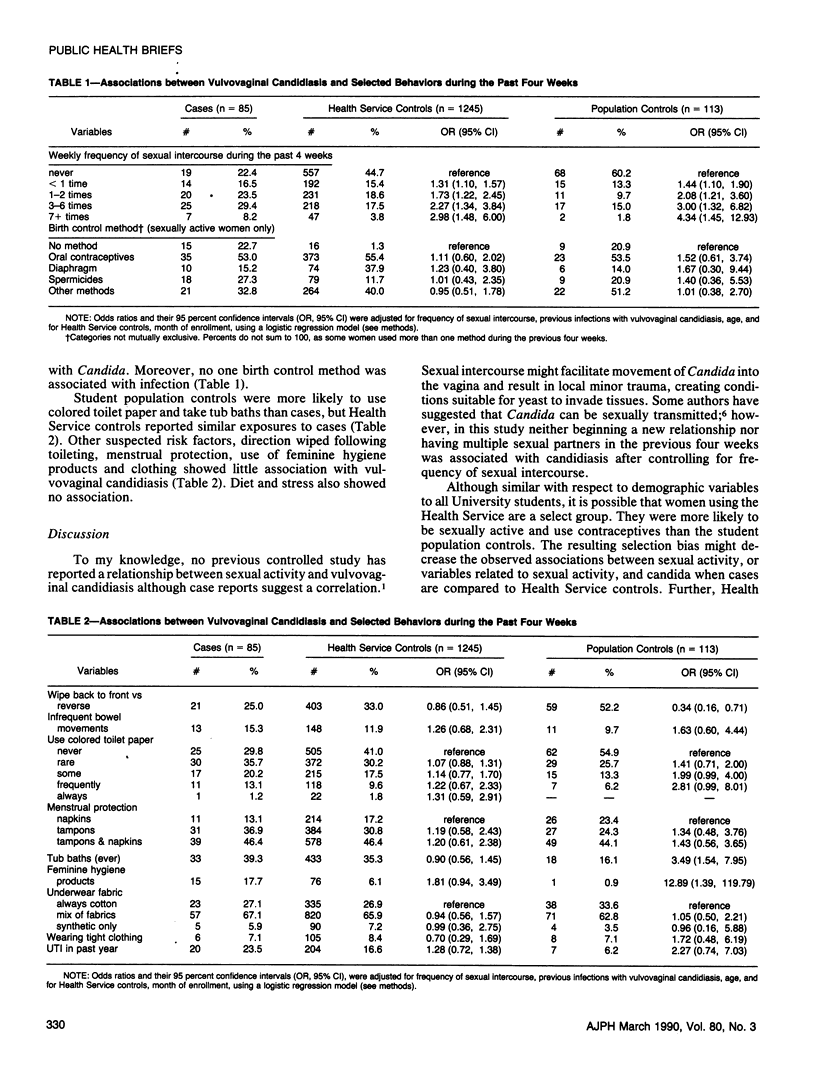Abstract
The effects of personal hygiene, sexual history, diet, and stress on the risk of vulvovaginal candidiasis were estimated from a case-control study of students attending a public university during 1986-87. Data from medical records and self-administered questionnaires were used to compare 85 cases to 1,245 other students using the Health Service, and to 113 subjects chosen from the total student population. Frequent sexual intercourse was the strongest risk factor (seven or more times a week versus none): OR = 4.3; 95% CI: 1.4, 12.9 (for cases versus Health Service controls).
Full text
PDF


Selected References
These references are in PubMed. This may not be the complete list of references from this article.
- Fleury F. J. Adult vaginitis. Clin Obstet Gynecol. 1981 Jun;24(2):407–438. doi: 10.1097/00003081-198106000-00008. [DOI] [PubMed] [Google Scholar]
- Leegaard M. The incidence of Candida albicans in the vagina of "healthy young women". How often do they have symptoms? Possible etiological factors. Acta Obstet Gynecol Scand. 1984;63(1):85–89. doi: 10.3109/00016348409156280. [DOI] [PubMed] [Google Scholar]
- Sobel J. D. Epidemiology and pathogenesis of recurrent vulvovaginal candidiasis. Am J Obstet Gynecol. 1985 Aug 1;152(7 Pt 2):924–935. doi: 10.1016/s0002-9378(85)80003-x. [DOI] [PubMed] [Google Scholar]


